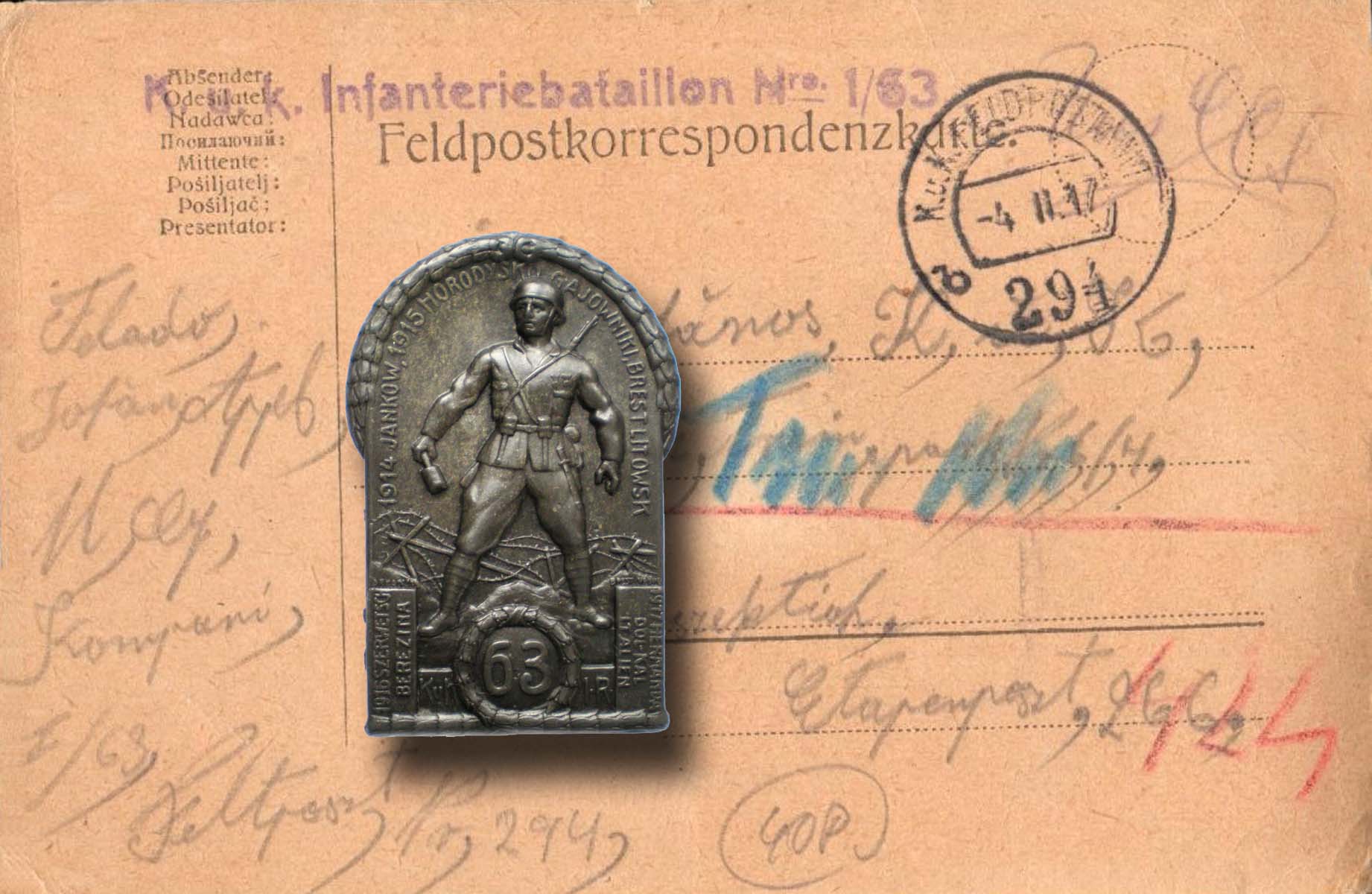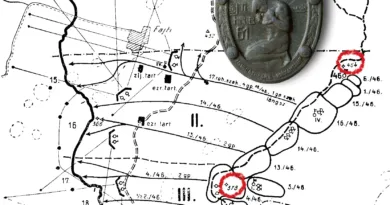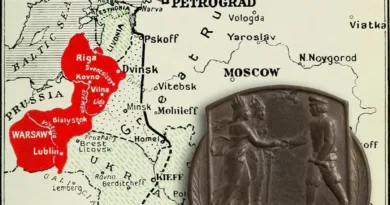June 1915
The 63rd Infantry Regiment in Transylvania recruited mostly Romanians and Saxons from the Beszterce area. The regiment did a great job during the war, although it was moved a lot, always directed to dangerous places. They took part in the liberation of Galicia in 1915, as the description of the battlefields on the badge shows. The regiment later returned to his “mother division,” the 35th, and was sent to the Karst Plateau and then to the Bainsizza Plateau on the Italian front. Eventually, they ended the war on the French front near Verdun.
In the summer of 1915, therefore, the Russians were driven back. From time to time they tried to set foot at points that could be well defended militarily, but for the time being everywhere the troops of the Monarchy and Germany managed to repel them at the cost of significant sacrifices. This is what the chapter on the history of the regiment in the volume entitled Transylvanian Regiments is about.

Landing in Jaroslau, the five-battalion strong regiment was fought in the German army of General Mackensen. It was assigned to the VI. corps and soon arrived near the battle line between Chotyniec-Kalnikow. After June 13, during further advance, the regiment took part in offensive battles. Two of his battalions fought a successful attack on the 246-meter-high Miszowa, and three of his battalions fought a group attacking Krakowiec. After two days of advance, the regiment stood in front of the vastly fortified Horodisko Heights. The attack began in the early morning. After massive artillery preparation, the onslaught began, but the tenacious enemy resisted firmly in many places. In the desperate battles, the 63s deployed on the southern slope of Horodisko, led by Colonel Skoday at 11 o’clock in the commander’s own will and repelled the enemy from their magnificently built positions, helping the neighboring troops to triumph. Own losses were severe, but the result was also great: with the occupation of Horodisko, the heroic attack of the 63s struck the last Russian line before Lemberg. Colonel Skoday received the Knight’s Cross of the Order of Leopold.
Meanwhile, the time had come for a decisive attack on the Wolica enemy positions. The onslaught, which began on July 15, after massive artillery preparation, found tough resistance. The 63rd Battalions were used as a corps reserve to support various offensive groups. A II. and V. battalions on the 18th in front of Gajowniki pushed into the trenches of the Russians in a heroic assault and occupied the village. Many thousands of prisoners were captured and significant munitions were looted, including 10 steaming full kitchen carts, a vivid indication of how secure the Russians considered their situation to be. The 5th Battalion was particularly distinguished here, but suffered such a heavy loss that it was disbanded, distributing its remains among the other battalions. The persecution of the Russians continued until the autumn of the year. The Monarchy also managed to recapture the previously lost territories of Galicia and Bukovina, as well as Russian-Poland. The new front line stretched 200 km east of the former state border in some areas of present-day Belarus and Ukraine.

The names of the battles that took place during the chase can be read in a circle on the badge attached to the entry. The badge was inscribed in 1917. This explains the assault soldier display on it. These special troops were still operating on an experimental basis in 1915, and were in the process of being formed. But by 1917, they were already integral to the tactical instructions of the troops. This justifies the highlighted representation.




